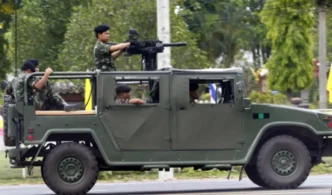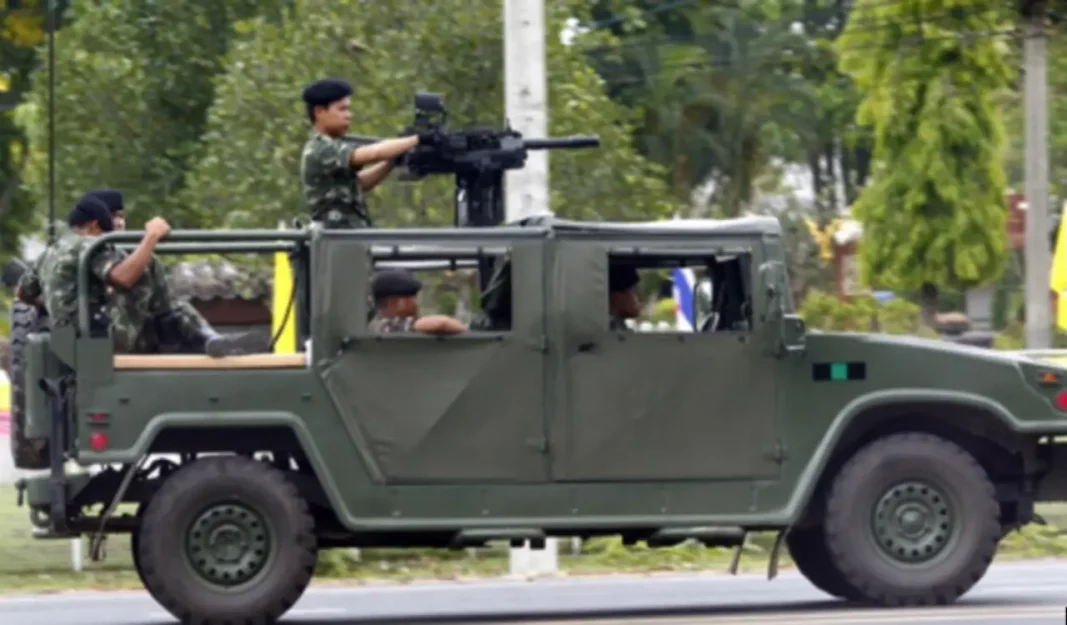A brief but deadly exchange of gunfire between Thai and Cambodian troops in a disputed border area has reignited long-standing tensions between the two Southeast Asian neighbors. The clash, which occurred early on May 28, 2025, in Preah Vihear province’s Choam Ksan district near Thailand’s Ubon Ratchathani province, left one Cambodian soldier dead, according to reports from both sides. The incident, lasting approximately 10 minutes, underscores the fragility of peace in a region marked by historical disputes over territory.
Details of the Incident
The skirmish broke out at around 5:45 a.m. local time in a contested zone along the Thailand-Cambodia border, an area both nations have claimed for decades. Major General Mao Phalla, spokesperson for the Royal Cambodian Army, confirmed the clash to Trayorng News, a Cambodian media outlet. “A brief clash did occur. The Thai side initiated the gunfire” he said. Phalla noted that he was still gathering further details and consulting with superiors before releasing additional information.
On the Thai side, an official speaking to local media countered that their troops were fired upon during a routine patrol in the Chon Bak area of Ubon Ratchathani province. According to The Nation Thailand, no casualties were reported on the Thai side, though the loss of one Cambodian soldier has heightened the stakes of the encounter. Efforts to reach Chhum Socheat, spokesperson for Cambodia’s Ministry of National Defence, for comment were unsuccessful as he was engaged in the closing ceremonies of the “Golden Dragon” joint military exercises with China.
The disputed area where the clash occurred has long been a flashpoint for conflict, with both nations agreeing in principle to maintain the status quo by prohibiting activities such as construction, troop movements, or excavations without prior notification. However, enforcement of these agreements has often been inconsistent, leading to periodic confrontations.
Historical Context of Border Disputes
The Thailand-Cambodia border, stretching over 800 kilometers, has been a source of friction for centuries, with overlapping territorial claims rooted in colonial-era treaties and post-independence negotiations. One of the most prominent disputes centers on the Preah Vihear Temple, a UNESCO World Heritage Site located in the Dangrek Mountains, which was awarded to Cambodia by the International Court of Justice in 1962. Despite the ruling, surrounding areas remain contested, and military skirmishes have flared intermittently, most notably between 2008 and 2011, when dozens of soldiers and civilians were killed in a series of clashes.
Since then, both governments have sought to de-escalate tensions through diplomatic channels and joint border committees. Yet, local military units on both sides often operate with a degree of autonomy, and misunderstandings or provocations can quickly spiral into violence. The area near Choam Ksan and Chon Bak, while less internationally prominent than Preah Vihear, is similarly sensitive due to its strategic location and historical significance to both nations.
Immediate Reactions and Diplomatic Moves
Following the fatal shooting, military commanders from Thailand and Cambodia are scheduled to meet on the evening of May 28 to discuss the incident and prevent further escalation. While details of the meeting remain undisclosed, it is likely to focus on reinforcing communication protocols and reaffirming commitments to avoid violence in disputed zones. Neither government has issued an official statement attributing definitive blame, though the competing narratives from Thai and Cambodian sources suggest that establishing a shared account of events will be challenging.
Public sentiment, as reflected in social media posts from the region, reveals a mix of concern and frustration. On platforms like X, users from both countries have expressed fears of renewed conflict, with some calling for stronger diplomatic intervention to resolve outstanding border issues. Others, particularly in Cambodia, have mourned the loss of the soldier, viewing the incident as a reminder of the human cost of unresolved disputes.
Broader Implications for Regional Stability
The timing of this clash is particularly significant given the broader geopolitical dynamics in Southeast Asia. Cambodia’s ongoing military cooperation with China, exemplified by the “Golden Dragon” exercises, has drawn scrutiny from neighboring countries, including Thailand, which maintains a delicate balance between its traditional alliance with the United States and its economic ties with Beijing. While there is no direct evidence linking the border incident to these larger strategic rivalries, the presence of foreign military influences in the region adds a layer of complexity to bilateral relations.
Moreover, both Thailand and Cambodia are members of the Association of Southeast Asian Nations (ASEAN), a regional bloc that prioritizes non-interference and consensus in addressing disputes. ASEAN has historically played a mediating role in Thailand-Cambodia border conflicts, most notably during the 2011 crisis when Indonesia, as chair, facilitated talks. If tensions escalate, there may be renewed calls for ASEAN to step in, though the organization’s effectiveness in resolving such bilateral issues has often been limited by its consensus-based approach.
Domestic Political Pressures
In Cambodia, the government of Prime Minister Hun Manet faces domestic pressure to respond assertively to perceived encroachments by Thailand, particularly as nationalist sentiments remain strong among segments of the population. The death of a soldier could amplify calls for a tougher stance, though Phnom Penh is also wary of alienating Bangkok, a key economic partner. Trade across the border, particularly through crossings like Aranyaprathet-Poipet, is vital for both nations, with goods and labor flowing in both directions.
In Thailand, the military’s role in politics remains significant, even under a civilian-led government. Border security is often framed as a matter of national pride, and any perceived weakness in handling disputes with Cambodia could draw criticism from hardline factions within the military and conservative political circles. At the same time, Thailand’s government is likely to prioritize stability, especially given domestic challenges such as economic recovery and internal political divisions.
Economic and Humanitarian Dimensions
Beyond the immediate military and political ramifications, border clashes have a direct impact on local communities. The area near Choam Ksan and Chon Bak is home to farmers, traders, and small businesses that rely on cross-border interactions for their livelihoods. Past conflicts have disrupted trade routes, displaced families, and heightened fears of violence among civilians. While no civilian casualties have been reported in this latest incident, the psychological toll on those living in contested zones cannot be understated.
Additionally, the economic stakes are high for both nations. Thailand and Cambodia have cooperated in recent years to develop border economic zones, with initiatives aimed at boosting tourism and trade. Incidents like the May 28 clash threaten to undermine these efforts, potentially deterring investment and straining bilateral economic ties. For instance, the cost of heightened security measures or temporary border closures could run into millions of Thai Baht or Cambodian Riel, with estimates difficult to quantify at this early stage.
Looking Ahead: A Path to De-escalation?
As military commanders prepare to meet, the immediate priority for both Thailand and Cambodia will be to contain the fallout from this tragic incident. Establishing clear lines of communication at the local level, ensuring transparency in reporting troop movements, and adhering to existing agreements on maintaining the status quo are critical steps to prevent further violence. At the same time, the loss of a Cambodian soldier serves as a somber reminder of the human cost of unresolved disputes, placing additional pressure on both governments to seek a lasting resolution.
Longer-term solutions, however, remain elusive. Joint border demarcation efforts have stalled repeatedly due to domestic political sensitivities and historical grievances. International mediation, whether through ASEAN or other bodies, may offer a way forward, but only if both sides demonstrate a genuine commitment to compromise. For now, the focus remains on preventing escalation, with the hope that dialogue can prevail over confrontation in this volatile corner of Southeast Asia.
As events unfold, the border region remains a tinderbox, where a single spark can ignite broader conflict. Whether this latest clash marks a turning point toward resolution or a descent into renewed hostility is a question that hangs heavily over Bangkok and Phnom Penh alike.















